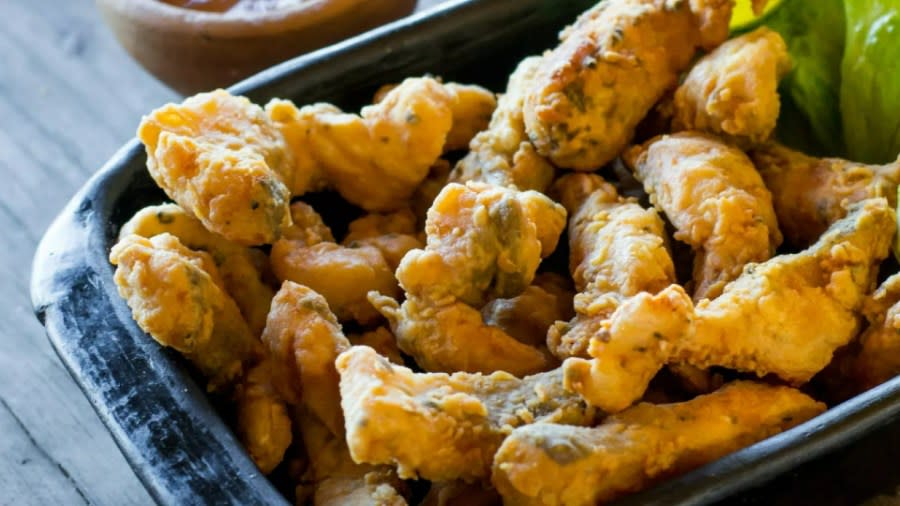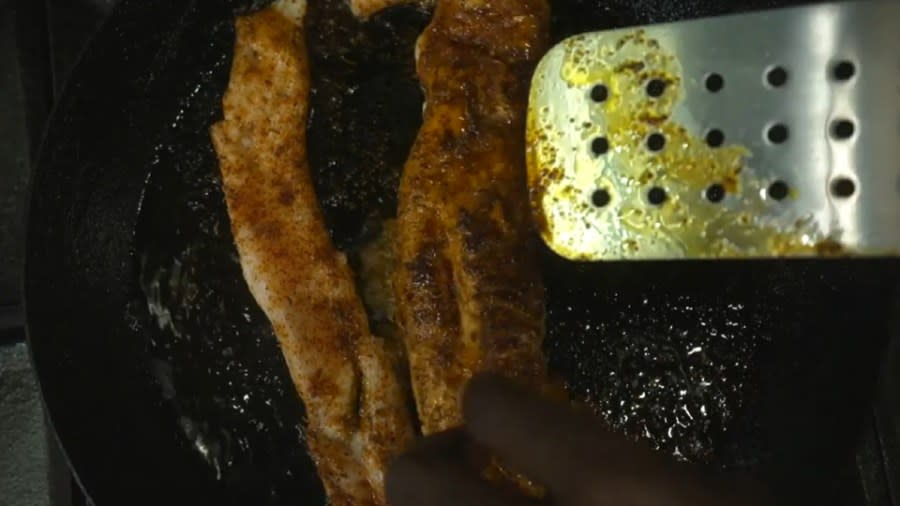Fighting invasive carp: Why you can’t find copi on store shelves
GRAND RAPIDS, Mich. (WOOD) — It has been nearly two years since the Illinois Department of Natural Resources announced its creative endeavor to fight back against invasive carp: giving it a new name and encouraging people to eat the fish.
Invasive carp — formerly known as Asian carp — are considered a major threat to the Great Lakes because they could upend the natural ecosystem. Invasive carp are voracious eaters and would devour the food sources for several popular Great Lakes fish, including walleye and rainbow trout, key players in the region’s billion-dollar fishing industry.
The IDNR renamed invasive carp as copi — short for copious. The agency teamed up with chefs and food retailers who are on board with the plan and even offered incentives funded by the Environmental Protection Agency’s Great Lakes Restoration Initiative. Yet it’s still almost impossible to find on store shelves.
Why? The rebranding effort hasn’t failed, but the full scope of the project hasn’t fully materialized.
Report: Funding fight triggers stalemate over invasive carp project
Brian Schoenung, the aquatic nuisance species program manager with the IDNR, says there are a couple factors at play, primarily that there aren’t enough commercial fishers out there targeting the fish for human consumption.
“We have enough at least for that area to handle the kind of removal we need to see. But then we have also got to build a processing capacity to be able to handle those fish and put them to a productive use,” Schoenung told News 8.

He says the IDNR continues to work with the U.S. Fish and Wildlife Service and other state agencies to encourage commercial fishers to take a chance on copi, but it can be hard without a proven track record that customers will buy in.
“Once folks go into the restaurant, they have to be willing to take a flyer on something like copi and give it a try,” Schoenung said.
Sign up for breaking news alert emails
Gordon Food Service partnered with the IDNR on the copi rebranding effort, but even it doesn’t have copi available yet for sale. A spokesperson for the company said GFS remains “interested in copi as a commercial product because of its potential to help combat an invasive species,” but it has not been able to lock in with a supplier that can bring it a good enough product.
Schoenung suspects one aspect of copi has been a major obstacle: bones.
“They are very bony,” he admitted. “You’re not getting a nice, clean, boneless fillet, which American consumers are pretty accustomed to eating. But there are a couple of ways around that. You can do strips. A lot of processors are mincing, which gives you that same sort of fish texture without the bone. Or you can do patties and tacos and all those sorts of things.”
DNR starts field trial to vaccinate wild deer for bovine tuberculosis
Clint Carter, who owns a seafood market in Springfield, Illinois, was another one of the retailers behind the project. He told The State Journal-Register that his team has developed an easy way to debone the fish and has found a receptive audience, but supply is still an issue, saying he typically only sells two to three cases a week.
“We are creating the demand with the restaurants, but delivery is an issue now and processing is another issue,” Carter told the Illinois newspaper. “With the younger generation, it checks all the right boxes (and) it’s the right thing to do. I don’t have any doubt here or globally. It has plenty of uses.”

Those plenty of uses are another factor. Commercial fisheries may be interested in copi, but they can make a profit with less labor and less risk by making the fish into other products, like fish oil or fish meal, bait and even pet food.
“I can get the fish at a relatively low price. I don’t need to ice them. I don’t need to worry about quality control nearly as much, and I can turn them into fish meal and fish oil and make a decent product,” Schoenung explained.
Invasive hemlock woolly adelgid found in eighth Michigan county
Unlike most other carp, copi are not bottom feeders and have a fresh and flavorful taste.
Chef Brian Jupiter, the 2022 “Chopped” champion who worked with the IDNR in the rebranding effort, said the fish is surprisingly versatile and making copi a popular source of protein can work.
“Copi is more savory than tilapia, cleaner tasting than catfish and firmer than cod,” Jupiter said in a 2022 news release. “It’s the perfect canvas for creativity — pan fried, steamed, broiled, baked, roasted or grilled.”
Copi is also quite healthy. They are second only to wild salmon in protein content and are high in both omega-3 and omega-6 fatty acids. And since they eat primarily plankton and vegetation, they have very little to no mercury or lead.
Sign up for the News 8 daily newsletter
It may be a new food for Americans, but globally, copi have been eaten in China and other countries for more than 1,000 years.
“Those folks seek out silver carp, bighead carp, grass carp. They are accustomed to eating that, they know what that is,” Schoenung said.
Copi isn’t the first rebranding effort in the fish market. The U.S. National Marine Fisheries Service has two notable successes. One is “Chilean sea bass” which previously went by “Patagonian toothfish.” “Orange roughy” became a hot commodity only after the agency changed its name from “slimehead” in the 1970s.
Schoenung and GFS both remain hopeful that copi can have the same impact.
“We are food people. We support the idea of being able to eat an invasive species and what that represents for the culinary community and what it represents for the Great Lakes,” GFS marketer Kelly Smallegan-Maas told News 8 in 2022. “It’s just a good product.”
For the latest news, weather, sports, and streaming video, head to WOODTV.com.

